GTX 1050 Showdown. Whose a better card?
Today on this performance review we are going to take a look at the Nvidia GeForce GTX 1050 and the GTX 1050 Ti. The pair is Nvidia’s budget GTX 1000 series cards featuring a price point of $109 and $139 respectively.
Both the Nvidia GTX 1050 and 1050 Ti are actually the company’s first 14nm GPUs featuring the GP107 Pascal architecture. The cards shares the same number of transistors, TDP, bus width and die size with the similarities ending there.
| MODEL | GeForce GTX 1050 2GB | GeForce GTX 1050 TI 4GB |
| SHADER UNITS | 640 | 768 |
| ROPs | 32 | 32 |
| GPU | GP107 | GP107 |
| TRANSISTOR COUNT | 3300M | 3300M |
| MEMORY CAPACITY | 2 GB | 4 GB |
| MEMORY TYPE | GDDR5 | GDDR5 |
| MEMORY BUS WIDTH | 128 bit | 128 bit |
| CORE CLOCK | 1354 MHz+ | 1290 MHz+ |
| MEMORY CLOCK | 1752 MHz | 1752 MHz |
| MSRP | $109 | $139 |
The GTX 1050 Ti has more shader units and a larger buffer at 4 GB. The GTX 1050 though compensates with a higher base clock. Today’s titles requires at least 2 GB of memory, with AAA titles requiring a bit more than that. But is the GTX 1050 in a pinch? Let us find out.
THE GRAPHICS CARDS:
The cards we got here are the samples from Nvidia and MSI. These are the MSI GTX 1050 2G OC and the GTX 1050 TI 4G OC respectively. The two shares the same classic MSI look, with similar size and display port configuration.
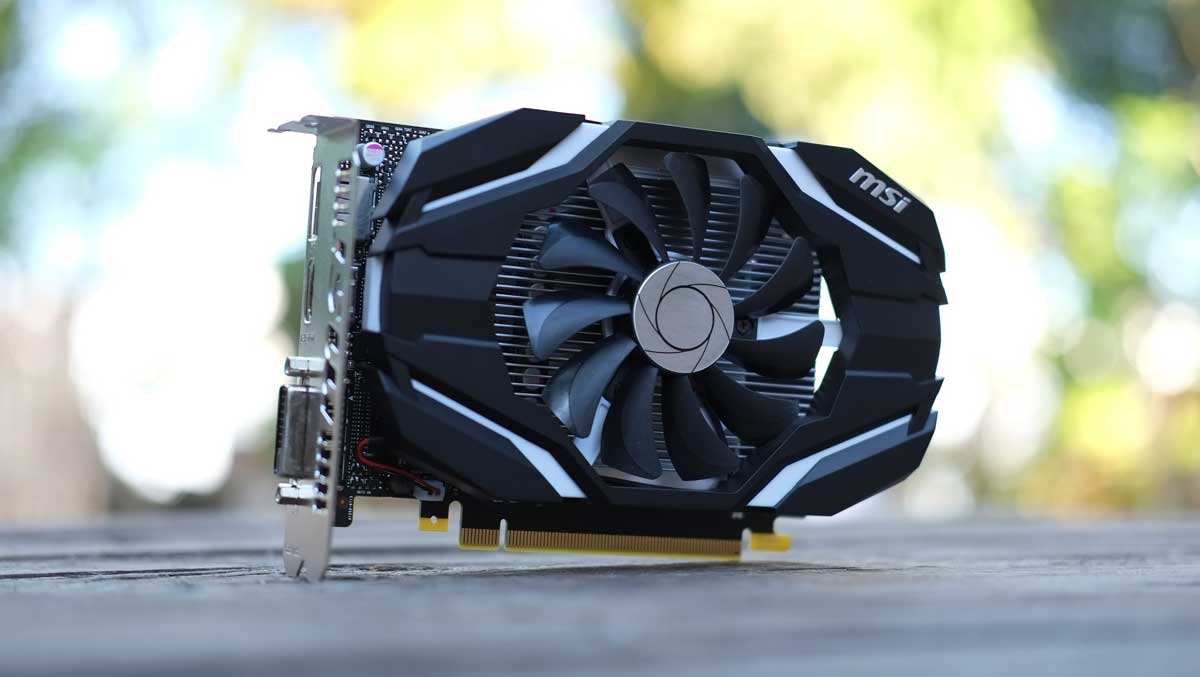
Power is provided by the PCI-E alone so in theory both graphics card could draw 75W of power. This makes them ideal for low power and low profile systems – especially the SFF form factor variants.
THE TEST SYSTEM AND BENCHMARKS:
Our test system is based on a Intel Core i5 6600K gaming system, which should be in-line with the latest mainstream gaming components. The operating system used is a 64-bit Windows 10 Pro Edition with power options set to high performance. Third party background applications are disabled unless they are absolutely required.
| TEST SYSTEM SPECIFICATIONS | |
| PROCESSOR | Intel Core i5 6600K |
| MOTHERBOARD | ASUS Z170-A |
| CPU COOLER | Cryorig C1 Top Flow |
| MEMORY KIT | Crucial Ballistix Tactical @ 2666MHz 4x4GB Kit |
| GRAPHICS CARD | MSI GTX 1050 2G OC and GTX 1050 Ti 4G OC |
| INTERNAL STORAGE | Crucial MX200 250GB |
| POWER SUPPLY | CORSAIR RM850X 850W |
| DISPLAY | 27″ DELL U2715H + LG 43UF680T 4K UHD TV |
| OPERATING SYSTEM | Microsoft Windows 10 Pro |
The games and benchmark tools should include 720p, 1080p, 1440p, and 2160p results if necessary to the hardware being tested. They are outlined below for your reference.
- 3DMARK 2013 – Firestrike Presets
- Luxmark – OpenCL benchmark
- Aida64 Extreme Edition – GPGPU benchmark
- Overwatch – Ultra Settings | V-SYNC off
- Battlefield 4 – Ultra Settings | V-SYNC off
- Starcraft 2 – Extreme Settings | V-SYNC off
- DOTA 2 – Maximum Settings | V-SYNC off
- DIRT: Rally – Ultra Settings | V-SYNC off
- Project CARS – Maximum Settings | V-SYNC off
- The Elder Scrolls V: Skyrim – Ultra Settings | V-SYNC off
- The Witcher 3: Wild Hunt – Ultra Settings | HairWorks off | V-SYNC off
FRAMES PER SECOND 101:
FPS is the general unit of which we measure a graphics card’s performance. Since higher FPS means that there are more frames rendered each second – the higher value, the smoother the gameplay should be especially with high refresh rate displays. Check out the difference of 30 and 60 FPS on this LINK.
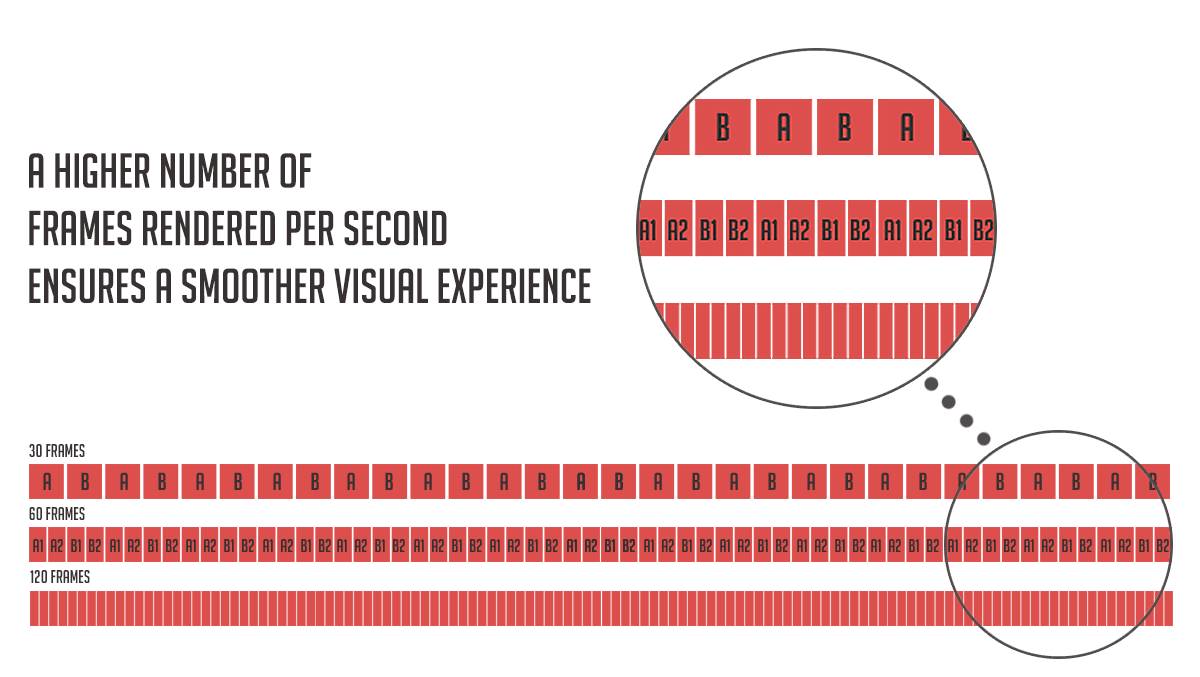
FPS values are recorded by FRAPS in-game using a linear gameplay for consistency. The results includes the Average FPS and 1% Minimum FPS. The 1% Minimum FPS represents the drops in-game sufficient enough for a gamer to notice. If the game doesn’t support FRAPS, we will use the available in-game benchmark tool.
POWER TEMPERATURE AND NOISE:
The AIDA64 System Stability Test uses a 64-bit multi-threaded stress testing module to drive the system to its absolute limits. Power readings are recorded with a watt-meter.
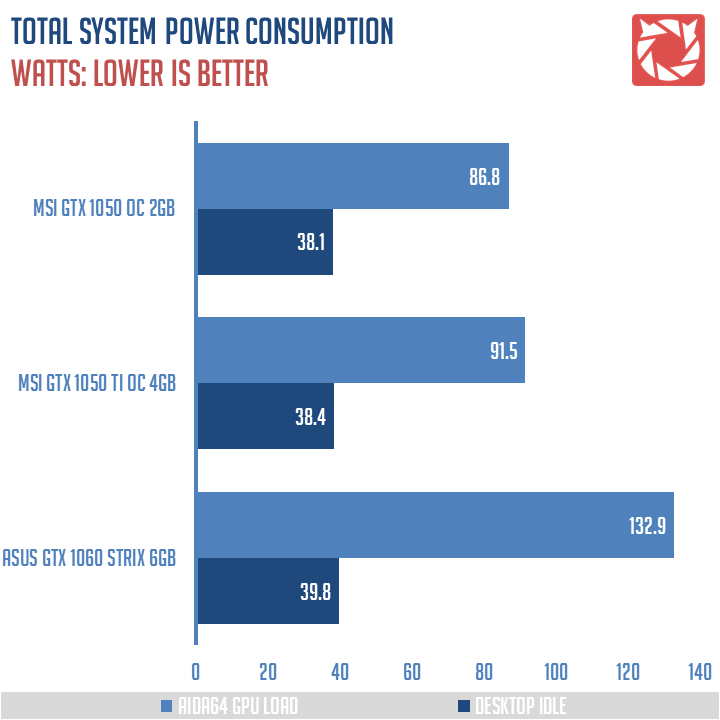
The AIDA64 System Stability Test is also used to evaluate the system thermals. Readings are taken with AIDA64 and is cross-referenced with HWiNFO.
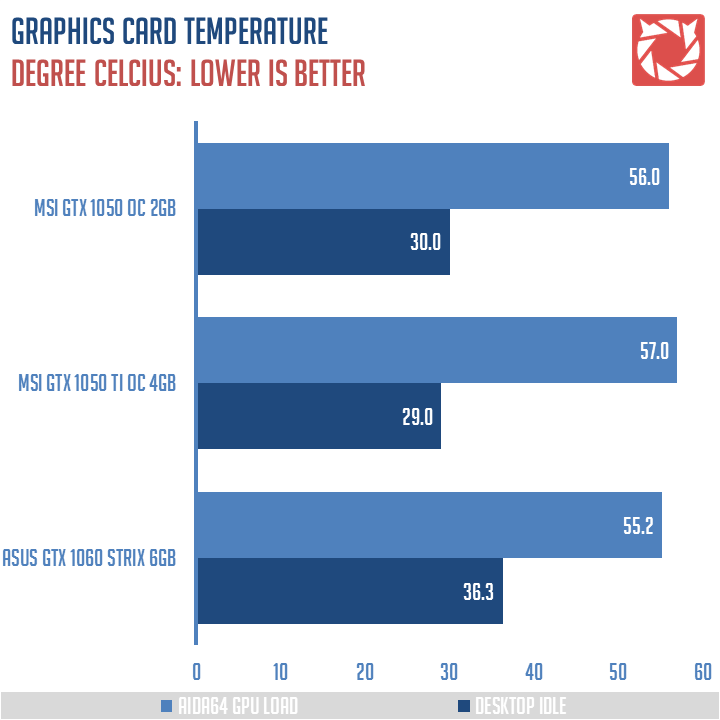
The noise level is evaluated during idle and a 15-minute load via AIDA64’s Stress Test. The noise measurement is taken by a sound level meter.
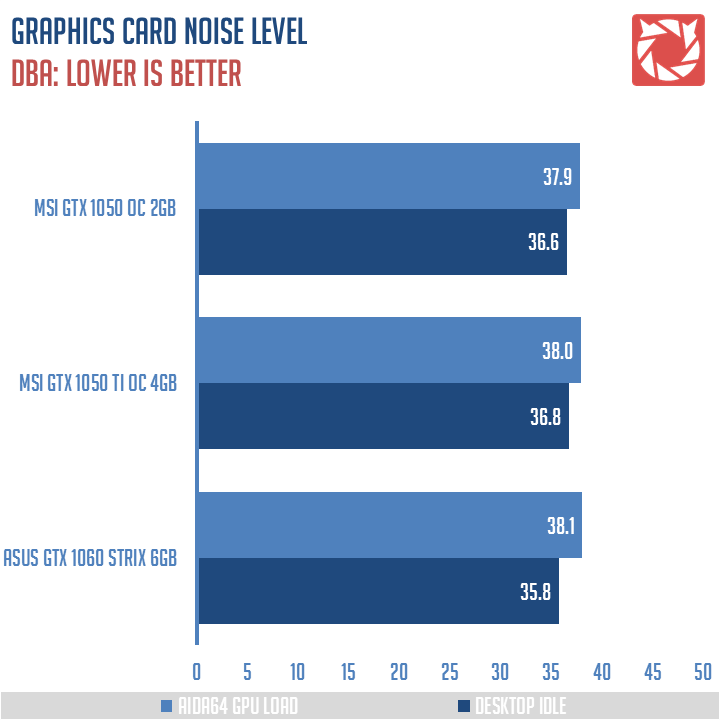
With a 75W TDP, the GTX 1050 and 1050 Ti features excellent power requirements. The GTX 1050 Ti uses a bit more power at 5.4%, but noise and thermals are almost exactly the same.
SYNTHETIC OPENCL AND GPGPU PERFORMANCE:
3DMark 2013 is a suite of benchmarks catered for a wide range of systems. The total system score from the FireStrike preset is used for the comparison.
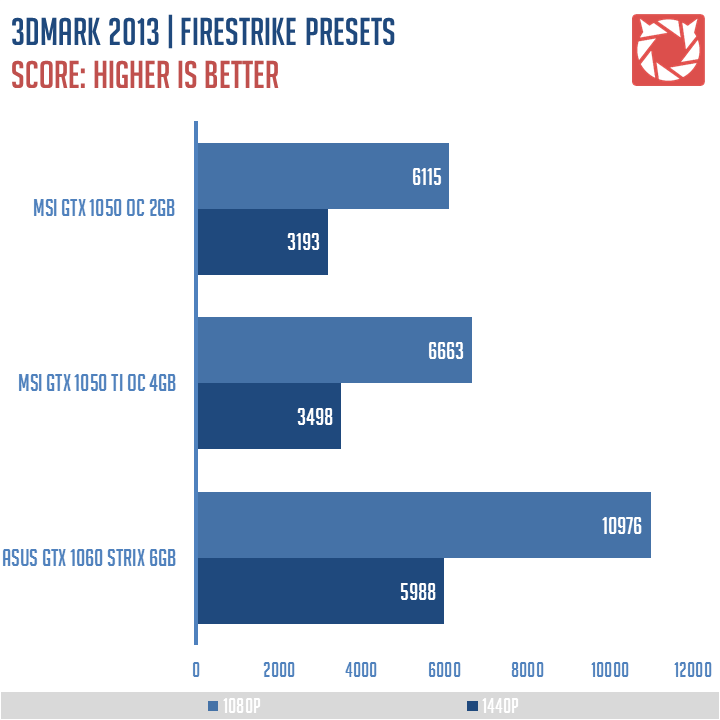
LuxMark is an OpenCL cross-platform benchmark tool. It has become one of the most used OpenCL benchmarks.
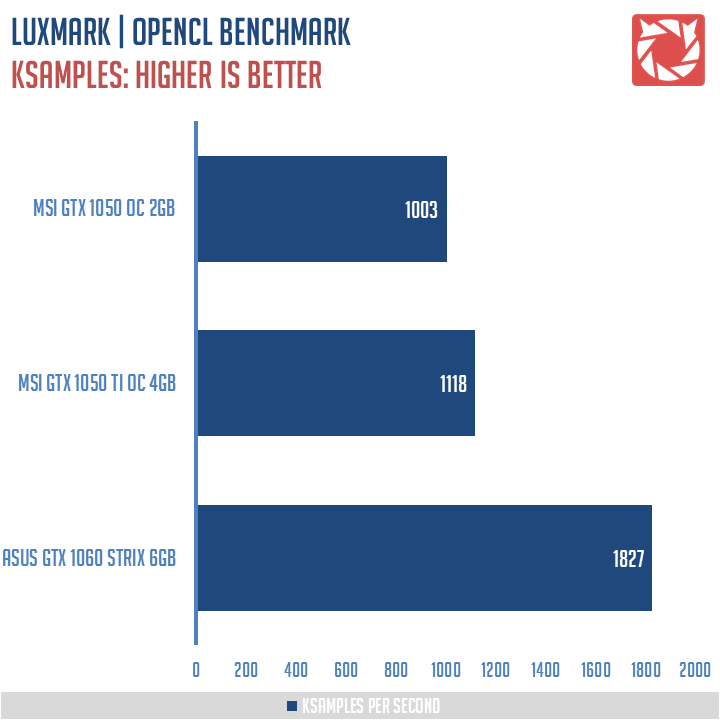
The Aida64 Extreme Edition GPGPU Benchmark is designed to measure GPGPU computing performance via different workloads.
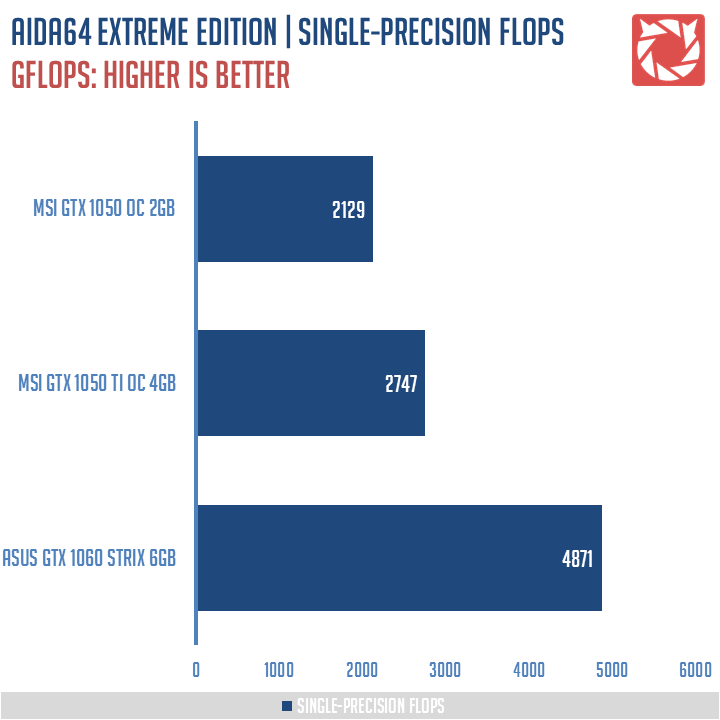
Syntethic benchmarks shows that the GTX 1050 Ti is around 9% to 29% faster compared to the GTX 1050. GPGPU performance is where the 1050 Ti shines the most, featuring a 2747 GFLOPS of raw performance.
| BENCHMARKS | NVIDIA GTX 1050 2GB | NVIDIA GTX 1050 TI 4GB |
| 3DMark Firestrike 1080P | 6115 | 6663 – 9% Faster |
| 3DMark Firestrike 1440P | 3193 | 3498 – 9.6% Faster |
| LuxMark OpenCL | 1003 | 1118 – 11.5% Faster |
| AIDA64 GPGPU Singe-Precision | 2129 | 2747 – 29% Faster |
GTX 1050 vs 1050 Ti GAMING PERFORMANCE:
Overwatch is Blizzard Entertainment’s critically acclaimed First Person Shooter. The game runs on a custom engine utilizing the DirectX 11 API.
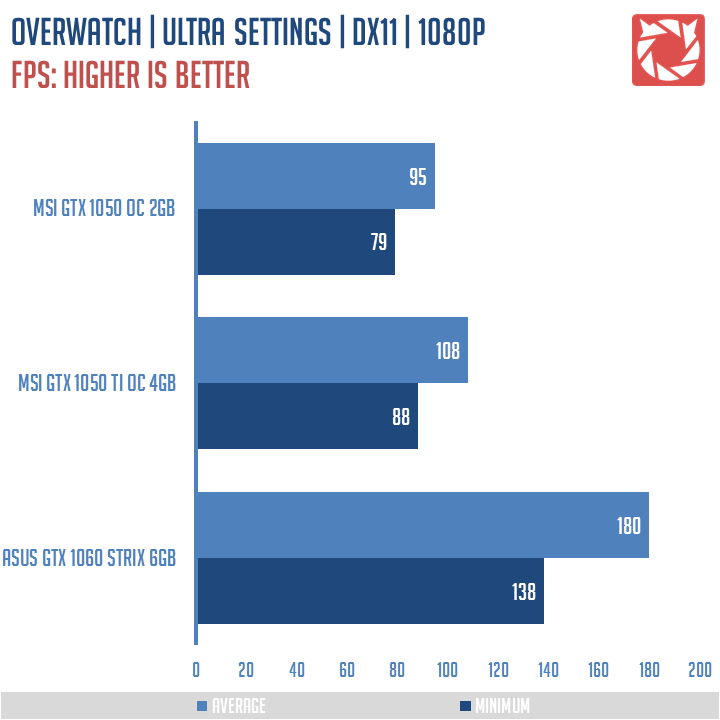
Battlefield 4 is Electronic Art’s popular First Person Shooter, running on the Frostbite 3 game engine developed by DICE. It utilizes the DirectX 11 and the Mantle API.
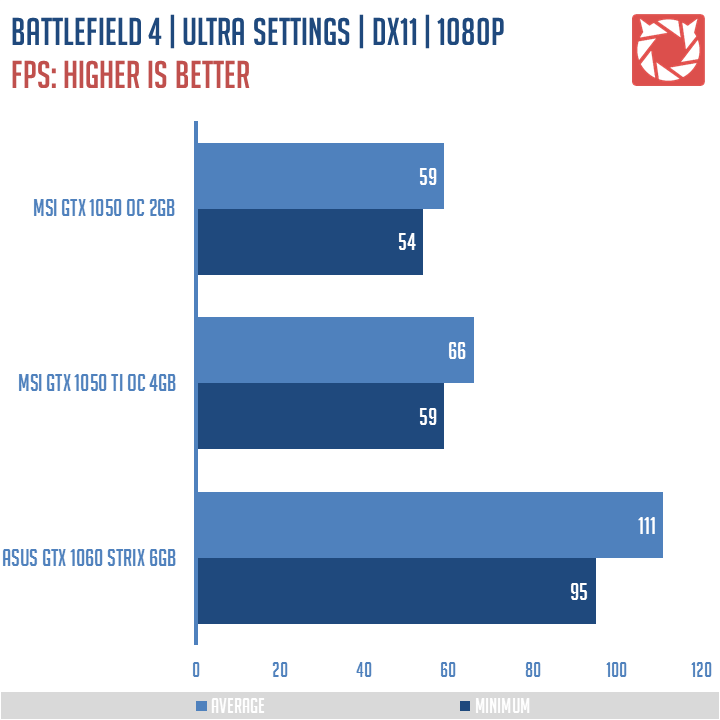
Starcraft 2 is Blizzard Entertainment’s critically acclaimed RTS game. The game runs on the HAVOC engine utilizing the DirectX 9 API.
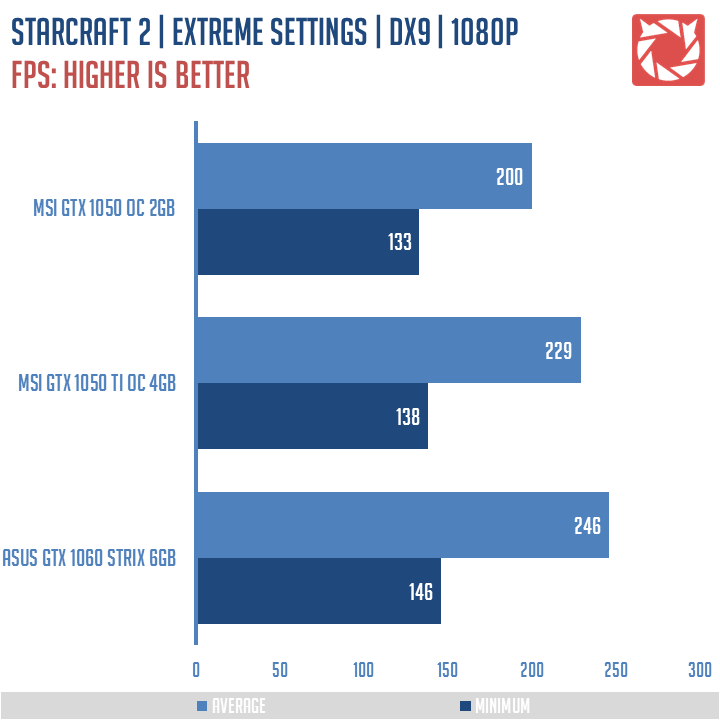
DOTA 2 is VALVE’s popular F2P MOBA game. The game runs on the Source engine with multi-API support.
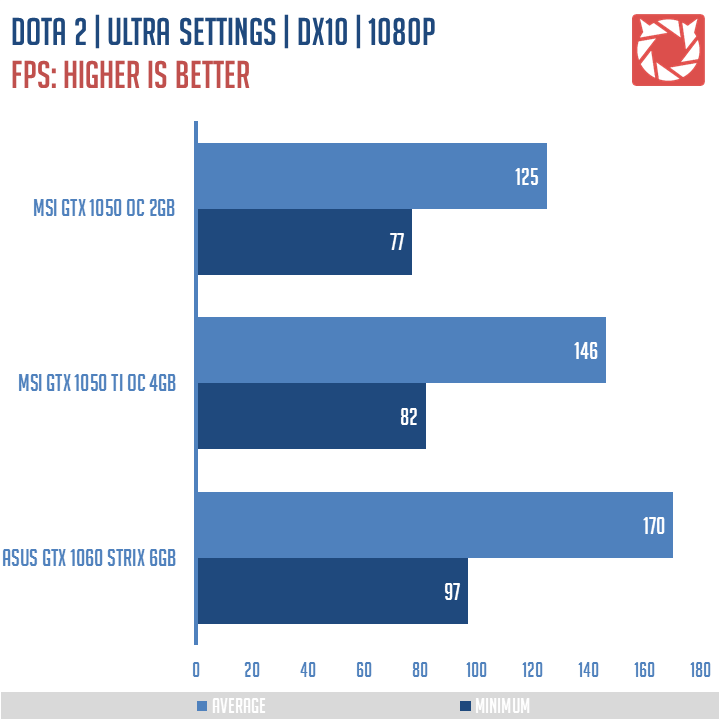
DIRT: Rally is CODEMASTER’s take on the rally racing game genre. It utilizes the EGO game engine with support for the DirectX 11 API.
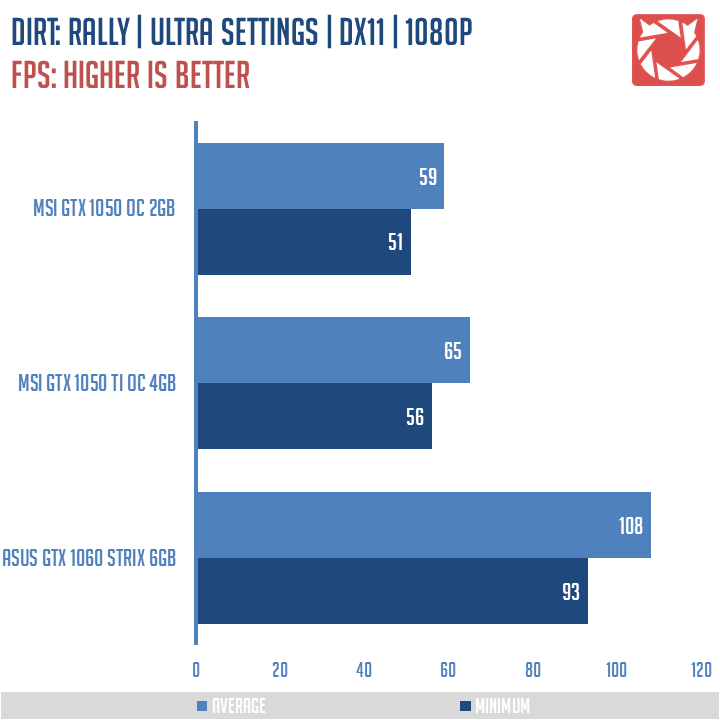
Project CARS is Slightly Mad Studios’ latest simulation racing game, running on the Madness game engine utilizing DirectX 11 support.
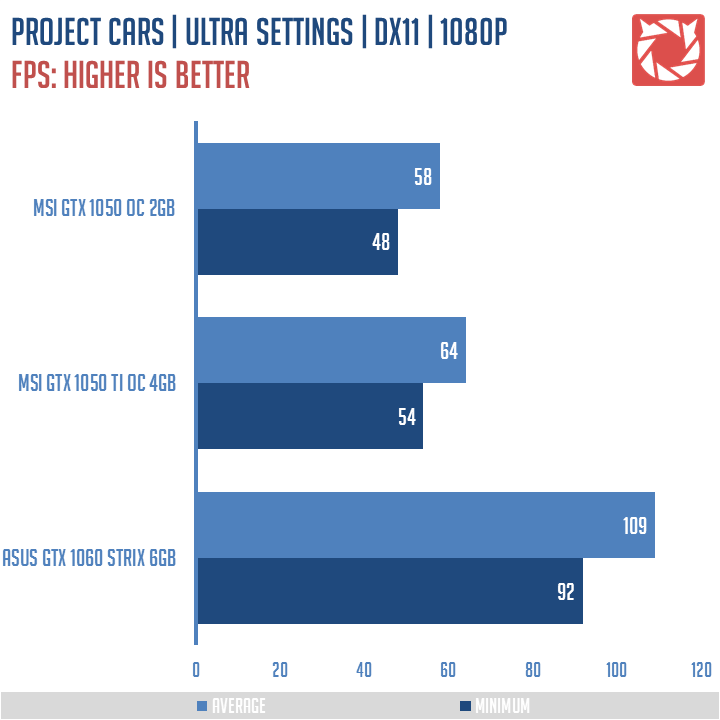
The Elder Scrolls V: Skyrim is Bethesda’s critically acclaimed Action Adventure RPG. Skyrim utilizes the Creation Engine with DirectX 10 support.
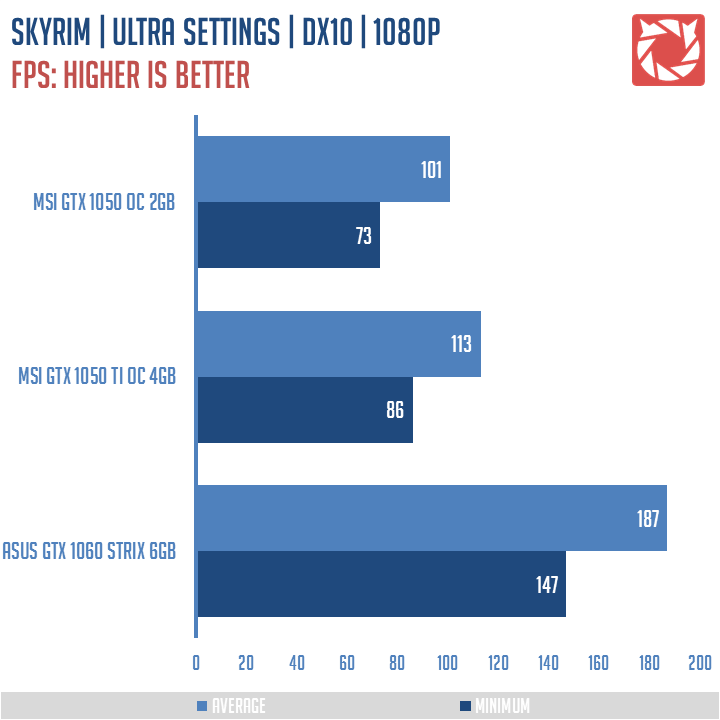
The Witcher 3: Wild Hunt is CDProjekt RED’s award-winning Action Adventure RPG. The Witcher 3 utilizes the REDengine 3 with DirectX 11 support.
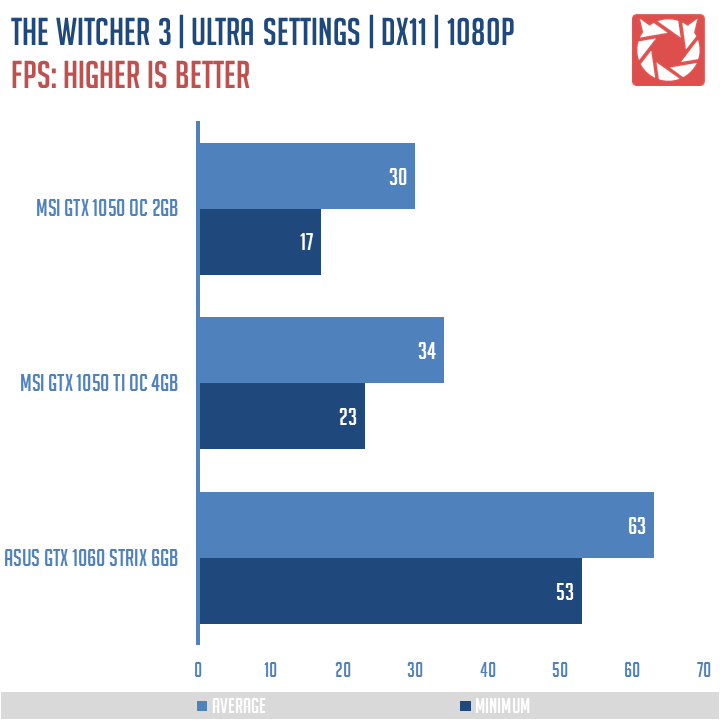
The GTX 1050 Ti is hands down the faster card delivering a 13.5% faster performance across all benchmarked games. Dota 2 has the best result at 16.8% lead, while our racing genre gave the least favorable results.
| GAMES | NVIDIA GTX 1050 2GB | NVIDIA GTX 1050 Ti 4GB |
| Overwatch 1080P | 95 | 108 – 13.7% Faster |
| Battlefield 4 1080P | 59 | 66 – 11.9% Faster |
| Starcraft 2 1080P | 200 | 229 – 14.5% Faster |
| Dota 2 1080P | 125 | 146 – 16.8% Faster |
| Dirt: Rally 1080P | 59 | 65 – 10.2% Faster |
| Project: CARS 1080P | 58 | 64 – 10.3% Faster |
| Skyrim 1080P | 101 | 113 – 11.9% Faster |
| The Witcher 3 1080P | 30 | 34 – 13.3% Faster |
| Average FPS at Tested Games | 90.875 | 103.125 – 13.5% Faster |
WRAPPING IT UP:
The GTX 1050 and 1050 Ti are budget cards and while both of them targets the same market range, the GTX 1050 Ti is hands down of course a better performer. Delivering a solid 60+ FPS average performance across most of the titles we tested at 1080P. But, it isn’t exactly the clear winner.
A quick look at current market price reveals that the GTX 1050 Ti at its best is around 20% more expensive than the GTX 1050, while delivering a 13.5% faster performance. The GTX 1050 on the other hand is not that bad at all, considering that you could get to the same level of performance by dialing down the in-game settings to favor a better frame output. The same could be said for the GTX 1050 Ti, but the card is hard to warrant for the price.
A 13.5% faster overall performance doesn’t equate to a better price-to-performance ratio especially if we are dealing with budget cards. Even if we have to note the GTX 1050 Ti’s 4GB buffer. The 14nm GP107 chips are just not ideal to provide a favorable output with a 4GB VRAM. This is the same case with the R9 380’s 2GB and 4GB models.
At the $100 USD arena, budget is king. That said, I will definitely choose the GTX 1050. Yes it is slower, but a whole lot more tolerable regardless. Until the GTX 1050 Ti gets adjusted to a better price point, the GTX 1050 2GB will remain as my top choice.
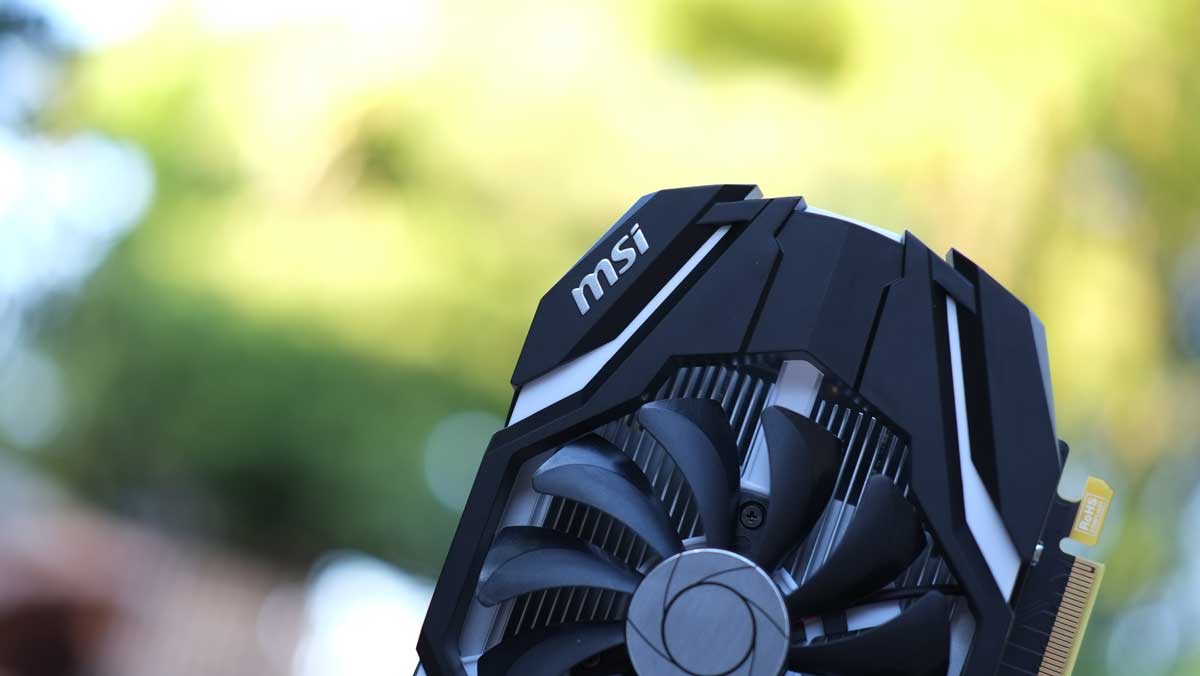
4
Nice article! Very very informative. I’m really torn between these two and I decideedto get the Ti version at 7050OPHO off Dynaquest. Then I saw the GIGABYTE RX 570 4GB which is the sweetest deal at 9950PHP at same store. What do you think?
4.5